Brain cancer (including brain tumours) kills more children than any other disease, and more adults under 40 than any other cancer. In Australia, it claims around one life every seven hours.
This is because brain tumours can spread and invade the brain, causing devastating consequences such as brain swelling.
With your support, we can fund research to:
To see the latest funded paediatric brain tumour research or pituitary brain tumour research please visit the pages below:
2025 Research Funded;
Funding: $200,000 across 3 years commencing 2024/25.
Funding partners: Private Philanthropic Foundation $50,000 p.a. + UniSA $30,000 + NRF $20,000
Successful outcomes in this proposal will establish a new approach to deliver anti-cancer drugs to brain tumours. While this proposal is focused on GBM, successful outcomes will also be of direct relevance to the treatment of other forms of brain tumour, and have the potential for rapid translation to clinical trials and far-reaching impact on brain tumour patient treatment.
Aims
Specifically, in this proposal we aim to:
1. Assess the potency of Drugs A, B and C in an extended panel of patient-derived GBM cells, which differ in their gene expression and mutation signatures and cover the three-known molecular subtypes of GBM.
2. Evaluate the ability of an approved immune-modulating drug to facilitate brain entry of Drugs A, B and C (that do not normally cross the BBB) at clinically relevant concentrations.
3. Assess the effect of combinational therapies of the immune-modulating drug with Drugs A, B and C on the growth of brain tumours in pre-clinical models.
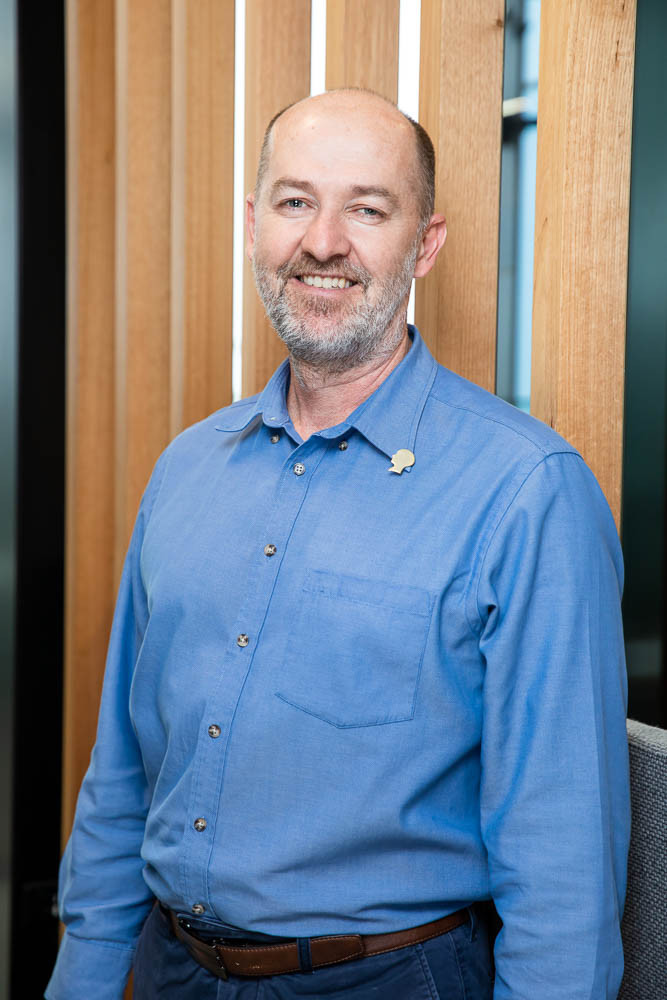
Prof Stuart Pitson is a NHMRC Senior Research Fellow and is the NRF Chair of Brain Tumour Research.
Head of the Molecular Therapeutics Laboratory at the Centre for Cancer Biology, University of South Australia and SA Pathology.
Funding: $50,000
High levels of tumour variability present a significant obstacle to treating glioblastoma, an aggressive brain tumour. Patient-derived glioblastoma explant organoids (GBOs) have emerged as a promising model for studying glioblastoma cells within a physiologically relevant tumour microenvironment. We generated GBOs from a cohort of patients and found that the variable GBO growth rates matched differences in patient survival. By applying omics approaches that allow in-depth analysis of GBOs and matching patient tissues, we identified PDLIM4 as a critical biomarker for patients with more quickly progressing glioblastoma. This proposal will investigate the potential of PDLIM4 as a target for developing new therapies for highly aggressive glioblastoma.
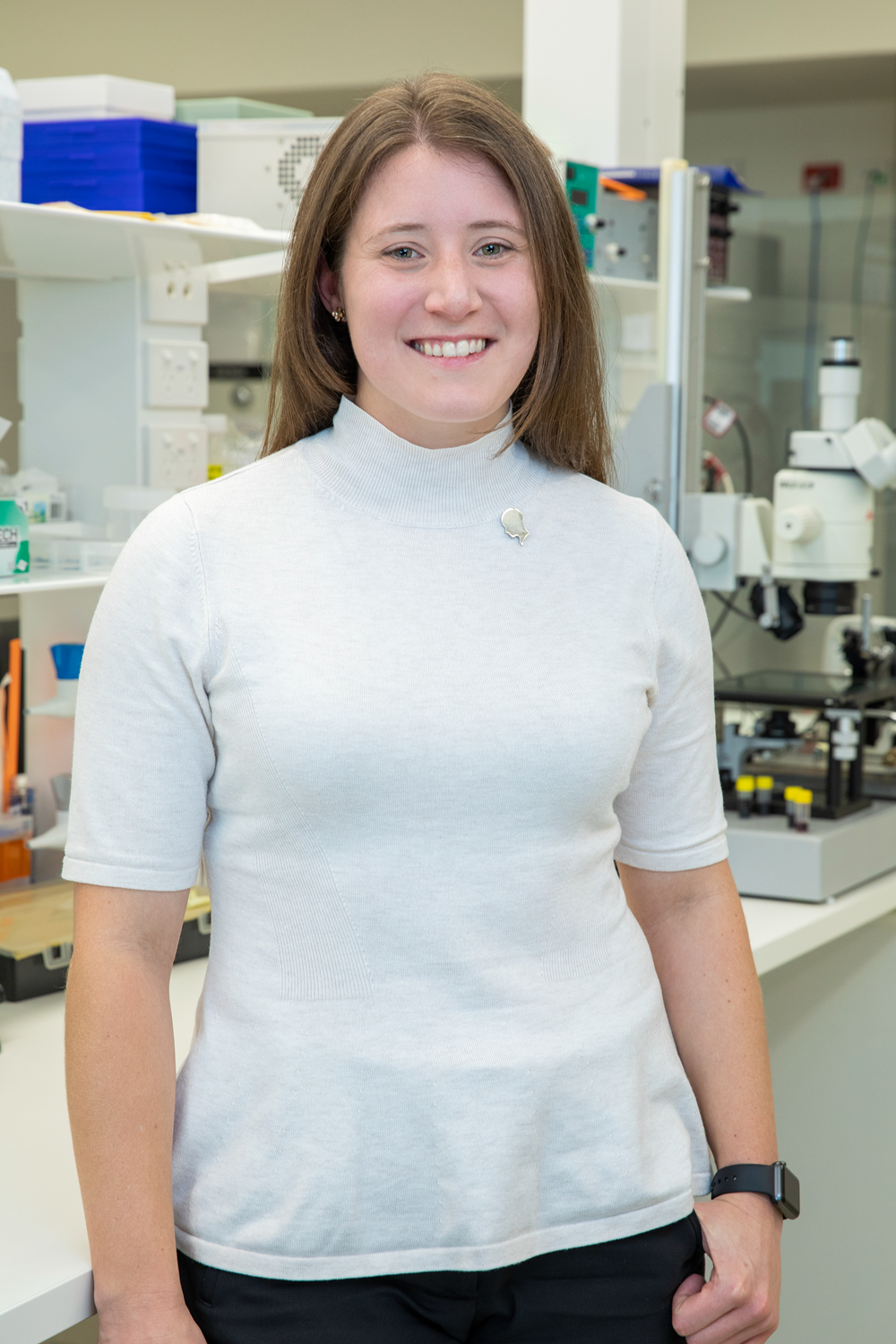
Ms Kaitlin Scheer, BSc.BioS, BSc (Hons), PhD Candidate (final year)
University of South Australia, Centre for Cancer Biology & UniSA Clinical Health Sciences
Funding: $50,000
Meningiomas are the most common benign central nervous system (CNS) tumours. Although typically low-grade, these tumours can cause significant morbidity, including functional deficits and seizure disorders. Sex hormone receptors expression in meningioma tissue varies and is not well characterised.
This research project aims to audit the expression of sex hormone receptors in meningioma tumours to expand current knowledge on the relationship between hormone receptor expression, tumour molecular characteristics and patient demographics, presentation of the disease and survival. We aim to better understand meningioma risk factors, disease progression and clinical outcomes. The outcomes of this project will serve as foundation for the development of bioinformatics, artificial intelligence, and preclinical ex vivo models for the identification and functional exploration of new pharmacological targets for adjuvant hormone therapy in meningioma management.
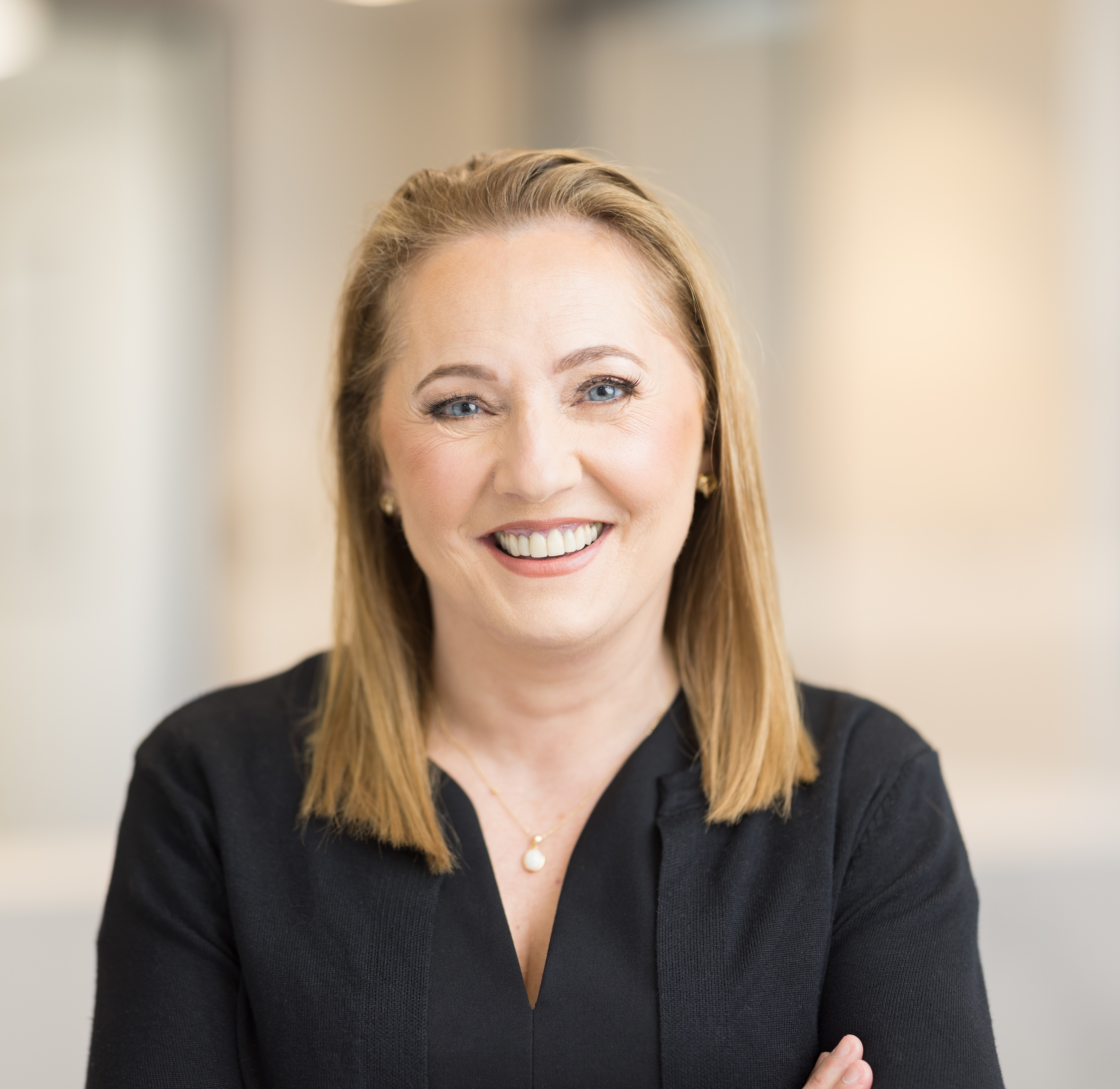
Dr Marguerite Harding
Consultant Neurosurgeon
Flinder Medical Centre
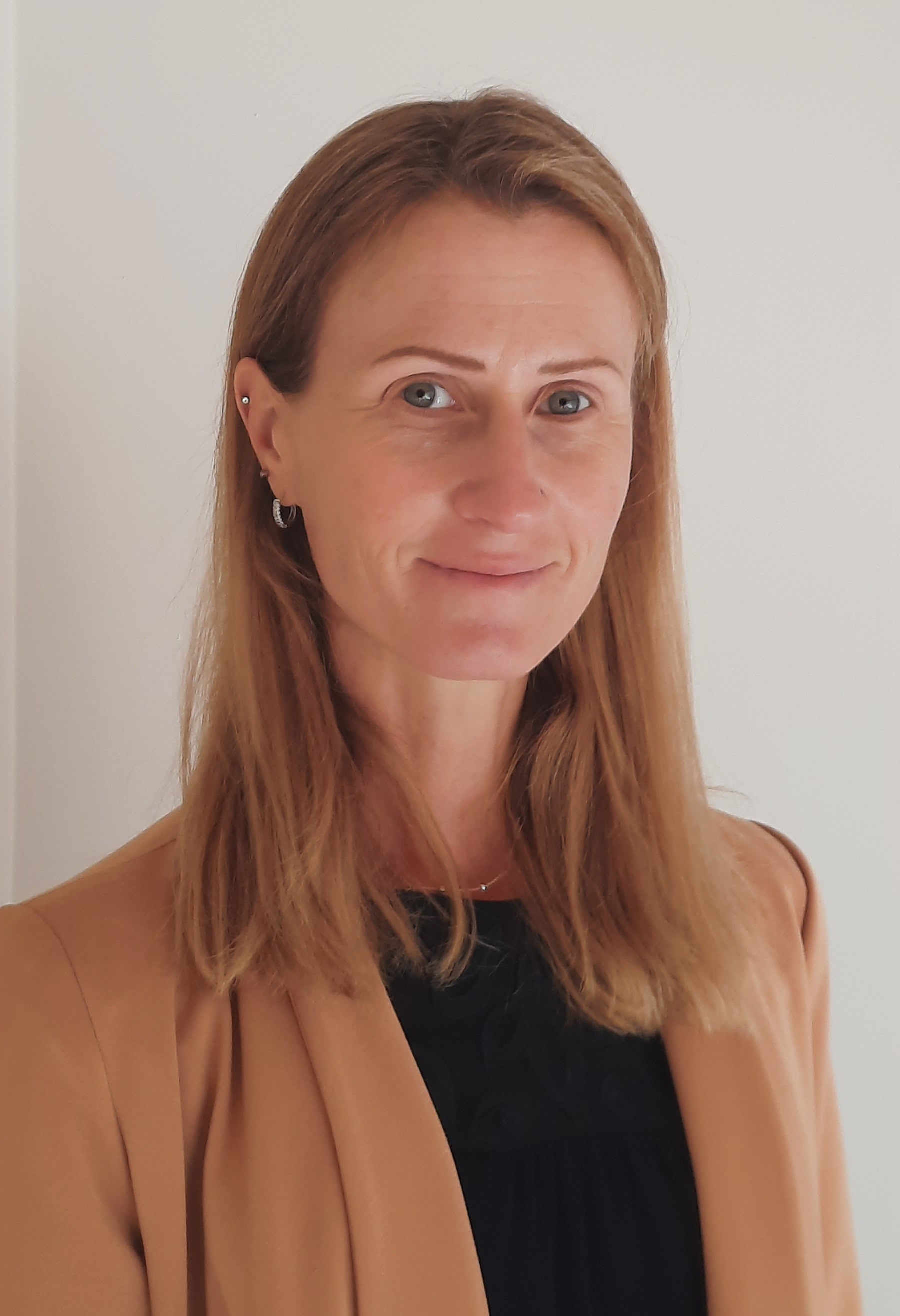
Dr Vanesa Tomatis, PhD
Research Coordinator, FMC Neurosurgery Department
Funded: $50,000
The survival rate for glioblastoma, the most common malignant primary brain tumour in adults, has barely improved, due to limited treatment options. Despite aggressive treatment, and irrespective of initial response to standard therapy, most patients succumb to the disease due to recurrence of the primary tumour through mechanisms of resistance. This proposal aims to identify specific mechanisms by which these complex tumours develop resistance to existing therapies and to develop clinically relevant models to assess approaches to overcome these mechanisms.

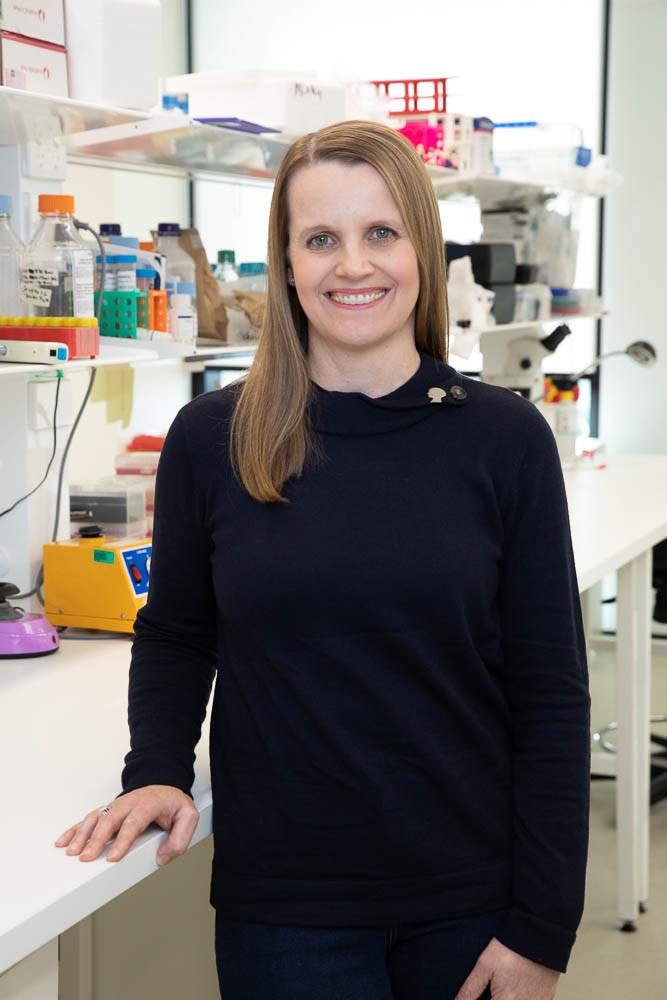
Dr Melinda Tea & Dr Briony Gliddon
University of South Australia Centre for Cancer Biology
Funding: $50,000
This project aims to study the radiation sensitivity of brain tumours in adults and children with Glioblastoma (GBM). We will grow and radiate tumour cells from both age groups in the lab, simulating clinical protocols. By comparing responses, we hope to understand age-related treatment effectiveness. Additionally, we will examine how the brain environment influences tumour response and create lab models to simulate the complex molecular environment of GBM. This research will enhance our understanding of tumour behaviour and treatment responses across ages.
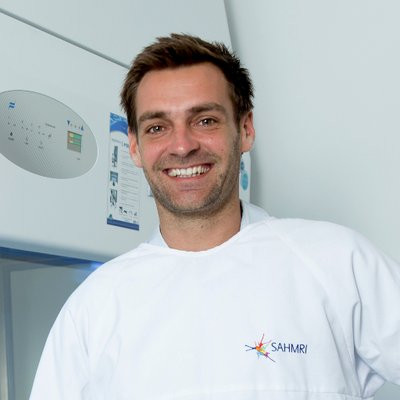
Professor Cedric Bardy PhD, ARC Future Fellow, Group Leader, Flinders University, SAHMRI
Funding: $20,000 ($10,000 Nick and Elise Ross + $10,000 James and Diana Ramsay Foundation)
Models that recapitulate key characteristics of human glioblastoma, namely invasiveness, heterogeneity, immune microenvironment, and intact blood-brain-barrier are essential for successful clinical translation of research. The immune system is fundamental to how glioblastoma responds to treatments, however, mouse models that mimic interactions between the human immune system and glioblastoma tumour are limited. To overcome this, we propose to develop humanised mouse models of glioblastoma; mice modified to produce human immune cells and which harbor brain tumours derived from patient glioblastoma cells. This will generate superior preclinical models of human glioblastoma, leading to improved translation of research and better patient outcomes.
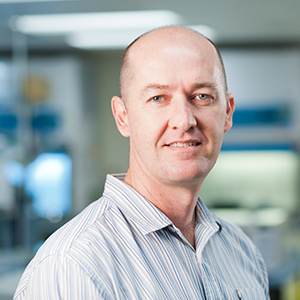
Prof Stuart Pitson is a NHMRC Senior Research Fellow and is the NRF Chair of Brain Tumour Research.
Head of the Molecular Therapeutics Laboratory at the Centre for Cancer Biology, University of South Australia and SA Pathology.
Funding: $48,332
With limited treatment options, glioblastoma, the most common type of brain cancer, has a median survival of only 15 months after diagnosis. Thus, new therapies are urgently needed. Among glioblastomas, 83% have abnormally acquired extra copies of many or all 1,165 genes located on chromosome 7. This provides numerous unexplored therapeutic opportunities. We have identified candidate drugs which we hypothesize eradicate glioblastoma cells with such genetic abnormalities. This project will create new 'isogenic' cell models to test our candidate drugs on these models, and on patient-derived models. This could ultimately benefit up to 88% of glioblastoma patients.

Associate Professor Pascal Duijf
PhD, Enterprise Fellow, Head, Cancer Pharmacogenomics Laboratory, University of South Australia, Centre for Cancer Biology
Funding: $50,000
Project Sponsor: Munno Para Foodland
Sphingosine kinase 2 (SK2) is a signalling enzyme that is hyper-activated in glioblastoma, correlating with poor patient outcomes. SK2 inhibitors kill glioblastoma cells, and genetic removal of SK2 in glioblastoma cells dramatically reduces tumour growth in the brains of mice. Thus, SK2 is an attractive therapeutic target for glioblastoma, which we examine in this proposal. We will use SK2 inhibitors (one already in Phase II clinical trials for other cancers) in mouse models of glioblastoma to provide advanced pre-clinical evaluation of their use in glioblastoma. Positive outcomes will lead to Phase II clinical trials in glioblastoma patients.

Dr Briony Gliddon, BSc(Hons), PhD, Co-Head, Brain Tumour Therapeutics Group, University of South Australia, Centre for Cancer Biology
Funding: $49,927
Glioblastoma (GBM) is very difficult to treat because it readily invades into normal brain, becomes resistant to current therapies, and escapes elimination by the immune system. We have recently identified that GBM cells escape from immune cells by producing a ‘don’t eat me’ signal known as CD47. We have made a major breakthrough by discovering that, if GBM cells lose CD47, they increase the import and metabolism of the amino acid cysteine as a survival mechanism. We propose to preclinically evaluate a new treatment strategy combining the targeting of both CD47 and cysteine metabolism using clinically ready drugs.
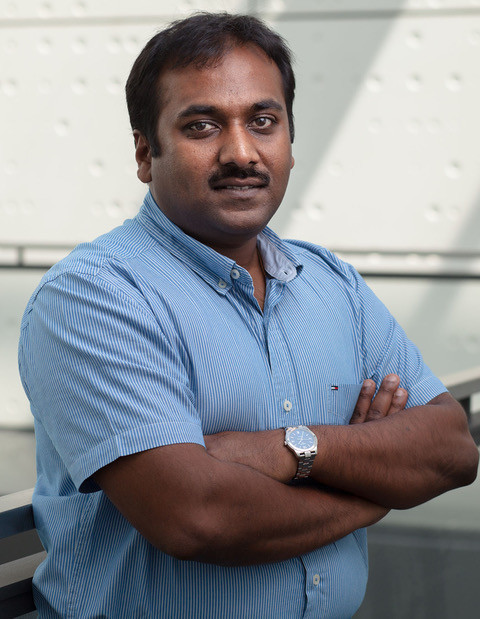
Dr Nirmal Robinson, M. Pharm, PhD, Head, Cellular-Stress and Immune Response Laboratory, University of South Australia, Centre for Cancer Biology
Funding: $50,000
Each year, around 1,500 Australians die from glioblastoma, the most common form of brain cancer, because current treatments are largely ineffective. Thus, we need new treatment approaches. Analysing over 80 million experimental data points from genome-wide CRISPR, RNAi and drug screens involving 6,658 drugs, we identified three strong candidate drugs that could benefit 88% of glioblastoma patients. We will create 'isogenic' glioblastoma cell lines without the genetic drug targets and test our drugs on these 'isogenic' cell models and on primary glioblastoma patient-derived cells. If successful, our new strategy could ultimately benefit 88% of glioblastoma patients.
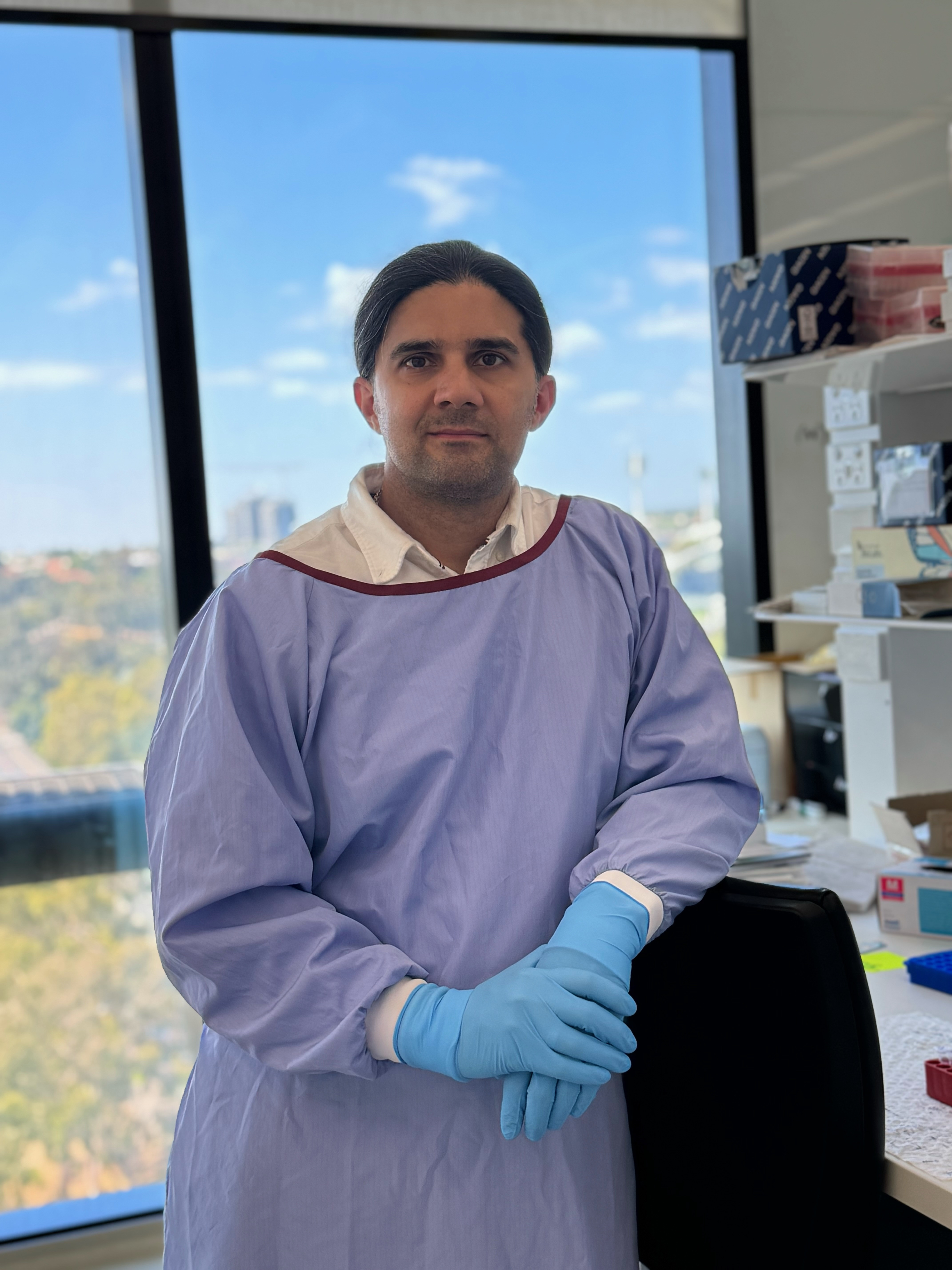
Dr Iman Lohraseb PhD, Post Doctoral Researcher, University of South Australia, Centre for Cancer Biology
Funding: $50,000
In Memory of Dustin "Dusty" Turner
The South Australian Neurological Tumour Bank (SANTB) is committed to advancing neuro-oncology research in SA. With the increasing numbero f projects that we support, additional FTE is critical to our ability to provide high quality and timely support. New Research Assistant will support the the SANTB which is a vital and expanding resource dedicated to supporting multiple research groups primarily in South Australia as well as interstate and overseas. Importantly, the SANTB will be better positioned to provide tailored support for each researcher’s projects, and it will ensure uninterrupted support for specimen collection and reduced delays associated with data collection, which are essential for the research activities and outputs of these groups.
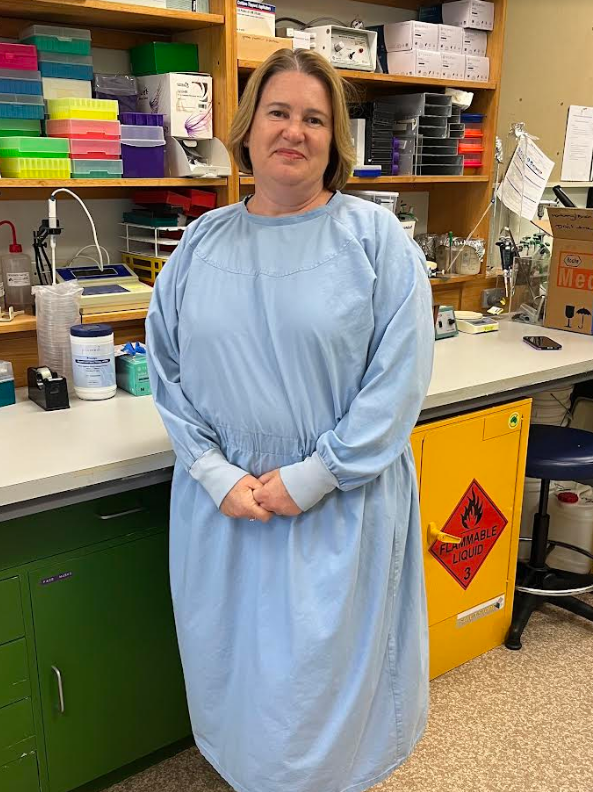
Bree Hodgson
Research Assistant, SANTB
Funding: $50,000
In Memory of Chris Thornton
Supporting Adult and Pediatric Phase 1 Study of Autologous GD2-Specific CAR T Cell Therapy in Recurrent GD2-positive Glioblastoma Multiforme: Ongoing Assessment and Dose Escalation Trial.
The Translational Oncology lab is a national leader in the field of CAR-T cell therapy for solid cancers. CAR-T therapy is a novel immune therapy that is manufactured from a patient’s white blood cells.
In the last 12 months we have manufactured 14 clinical CAR-T products, with each product taking 3-4 weeks to make, and the same or greater manufacturing load is expected in the next 12 months. This has led to the appointing of a new research scientist, the Chief Investigator mentioned in this application. Dr Sidra Khan’s role is to contribute to the manufacturing of CAR-T cells and to manage the follow-up of patients infused with CAR-T cells. The grant will be used to extend the current 6-month contract for an additional 6 months, which is essential to ensuring we can continue to effectively manage the growing patient demand for our trials.
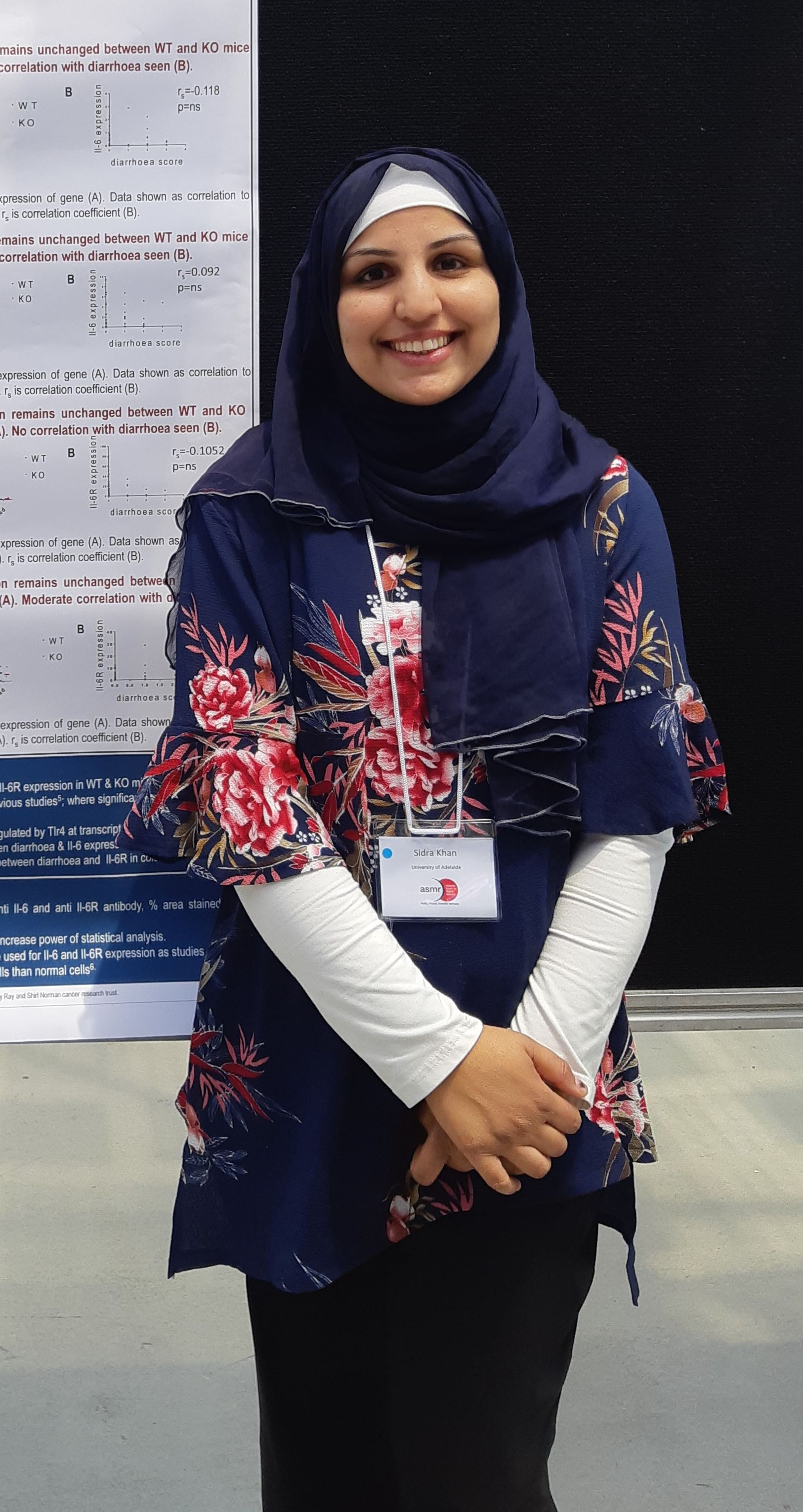
Sidra Khan
Research Scientist, Translational Oncology Laboratory / Clinical Trial Unit / Centre for Cancer Biology
Funding: $375,000 across 3 years commencing 2024/25.
Funding partners: SA Health $100,000 p.a. + NRF $25,000 p.a.
New state-wide Brain Cancer Nurse Consultant role being introduced into the Central Adelaide Local Health Network (CALHN) to enhance access to support and care for patients and their families diagnosed with a brain tumour. The position will operate on a state-wide basis and will focus on the two current metropolitan sites: Royal Adelaide Hospital and Flinders Medical Centre.
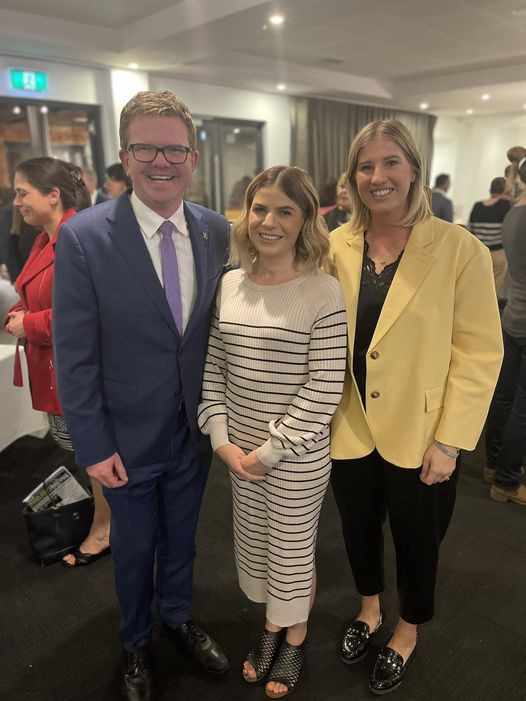
New Brain Tumour Consultant Nurse Hayley Henley (pictured middle)

2024 Research Funded:
Funding: $300,000 (James & Diana Ramsay Foundation) across 3 years commencing 2023/24.
Glioblastoma is the deadliest form of brain cancer, yet current treatment options are largely ineffective. In response to this desperate need, we are developing a new treatment for glioblastoma, based on a revolutionary type of ‘living drug’ known as CAR-T cells. In this approach, T cells (part of our immune system) are isolated from a patient’s blood and genetically engineered to give them cancer killing activity. These cells are returned to the patient’s bloodstream; they then travel to the tumour to attack it from within. To achieve our goal of developing successful CAR-T cell therapies for glioblastoma, our team of scientists and doctors first test and optimise potential new therapies in the laboratory. We then move our best performing candidates into clinical trials for Australian patients. We have two brain cancer CAR-T cell trials currently running, but only have funding to treat a limited number of patients. We therefore seek further funding to allow us to treat additional patients, and to support our laboratory-based program to further enhance the effectiveness of these new treatments.
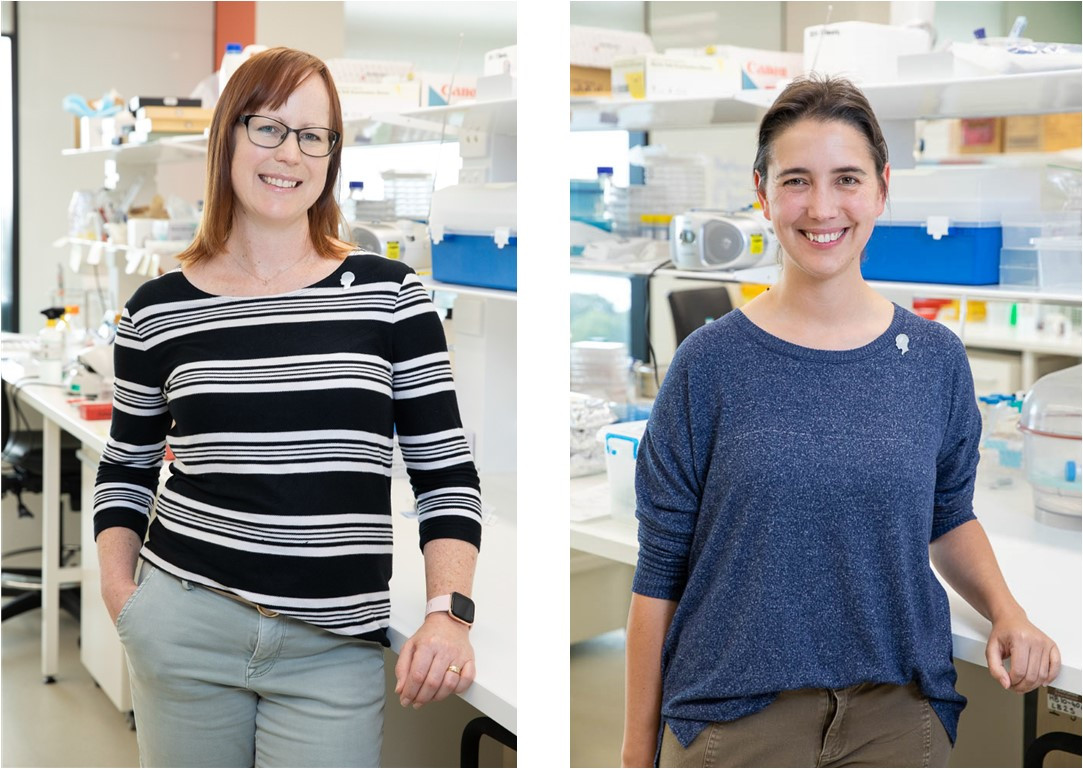
(L) Associate Professor Lisa Ebert B.Sc.(Hons), PhD Senior Research Fellow
Central Adelaide Local Health Network, SA Health -Centre for Cancer Biology
(R) Dr Tessa Gargett, Research Officer
Centre for Cancer Biology, UniSA
Funding: $100,000 (Perpetual)
Glioblastoma (GBM) is the most common and lethal type of brain cancer in both children and adults. Despite advances in detection and treatment the survival rate (less than 5%), has not improved in the past 30 years. Therefore, more effective therapies are desperately needed to extend quality patient survival. Our research team has preliminary evidence that the active compounds of medicinal cannabis, known as phytocannabinoids, are able to kill GBM cells. This project aims to provide the necessary preclinical evidence to support the translation of cannabis therapy to GBM patients by identifying which compounds are the most effective, which patients are most likely to respond to this treatment and how much of the treatment should be prescribed. This innovative and personalised approach, called precision medicine (right drug) and dosing (right amount), using novel cannabis extracts might constitute a revolutionary anti-cancer therapy.
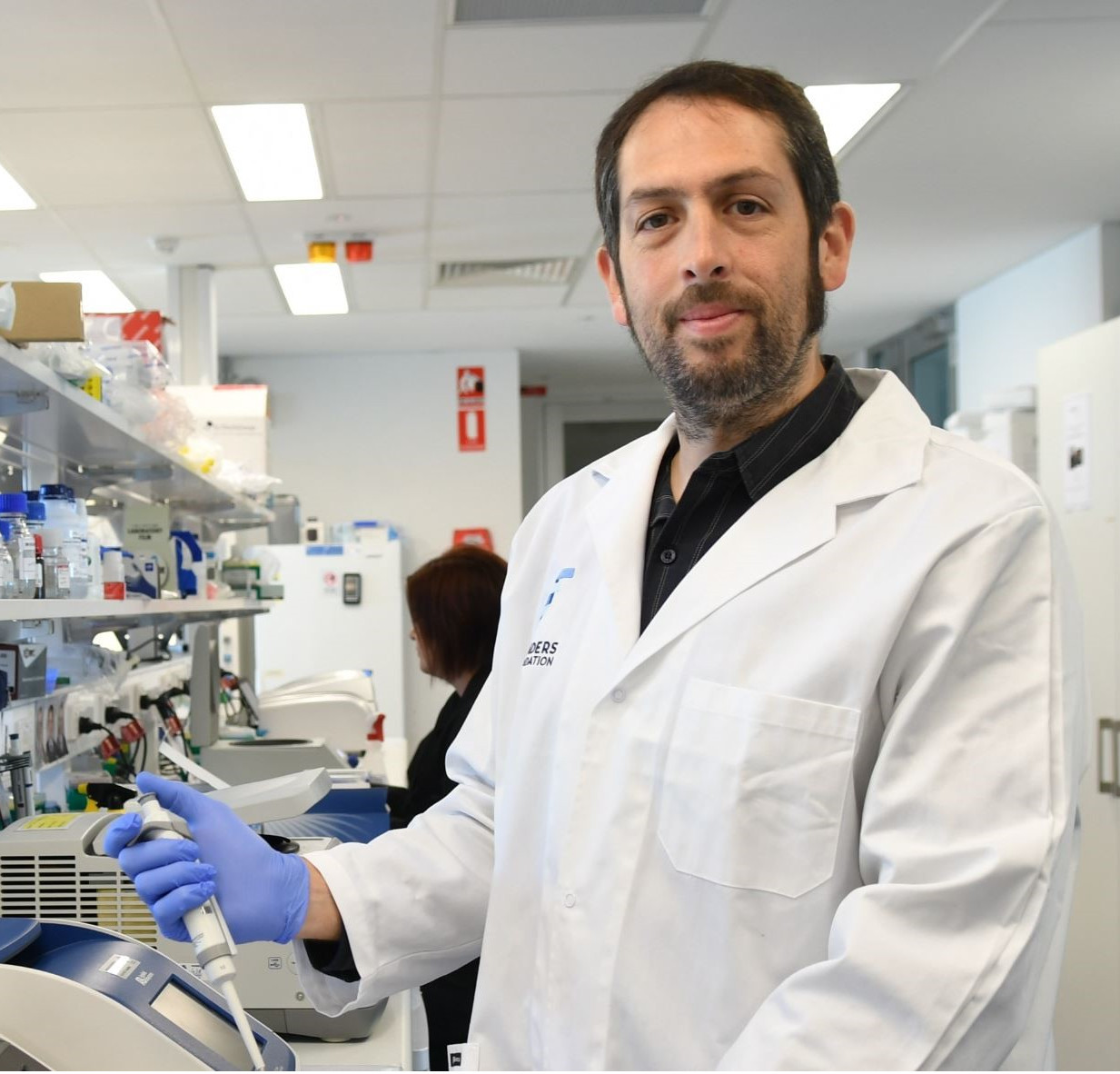
Prof Simon Conn
NHMRC Investigator Leadership Fellow
Flinders Health and Medical Research Institute (FHMRI), Flinders University
Funding: $49,890
Glioblastoma (GBM) has been untreatable, because they invade into other regions of the brain, become resistant to currently available therapies and escape elimination by the immune system. We have identified that GBM cells produce a ‘don’t eat me’ signal known as CD47 to escape from immune cells and which aids migration and invasion. Furthermore, loss of CD47 increases mitochondrial (energy power house of cells) function and metabolism. Therefore, we propose to preclinically evaluate a combination treatment strategy using an antibody that targets CD47 and an inhibitor of mitochondrial metabolism.

Dr Nirmal Robinson M. Pharm, PhD Head, Cellular-Stress and Immune Response Laboratory
University of South Australia - Centre for Cancer Biology
Funding: $50,000
GD2 is a promising tumour marker for CAR T cell immunotherapy for brain tumours, and indeed, we have contributed to the establishment of two clinical trials using GD2-targeting CAR T cell immunotherapies for treatment of adults with glioblastoma and children with diffuse midline glioma. Our pre-clinical findings, however, suggest that enhancing GD2 expression in the tumour is likely to improve clinical responses to this therapeutic approach. Thus, this proposal examines approaches to do this, to improve GD2-targeting CAR T cell immunotherapies for glioblastoma. Successful outcomes could also impact the therapy of children with diffuse midline glioma and forms of medulloblastoma.
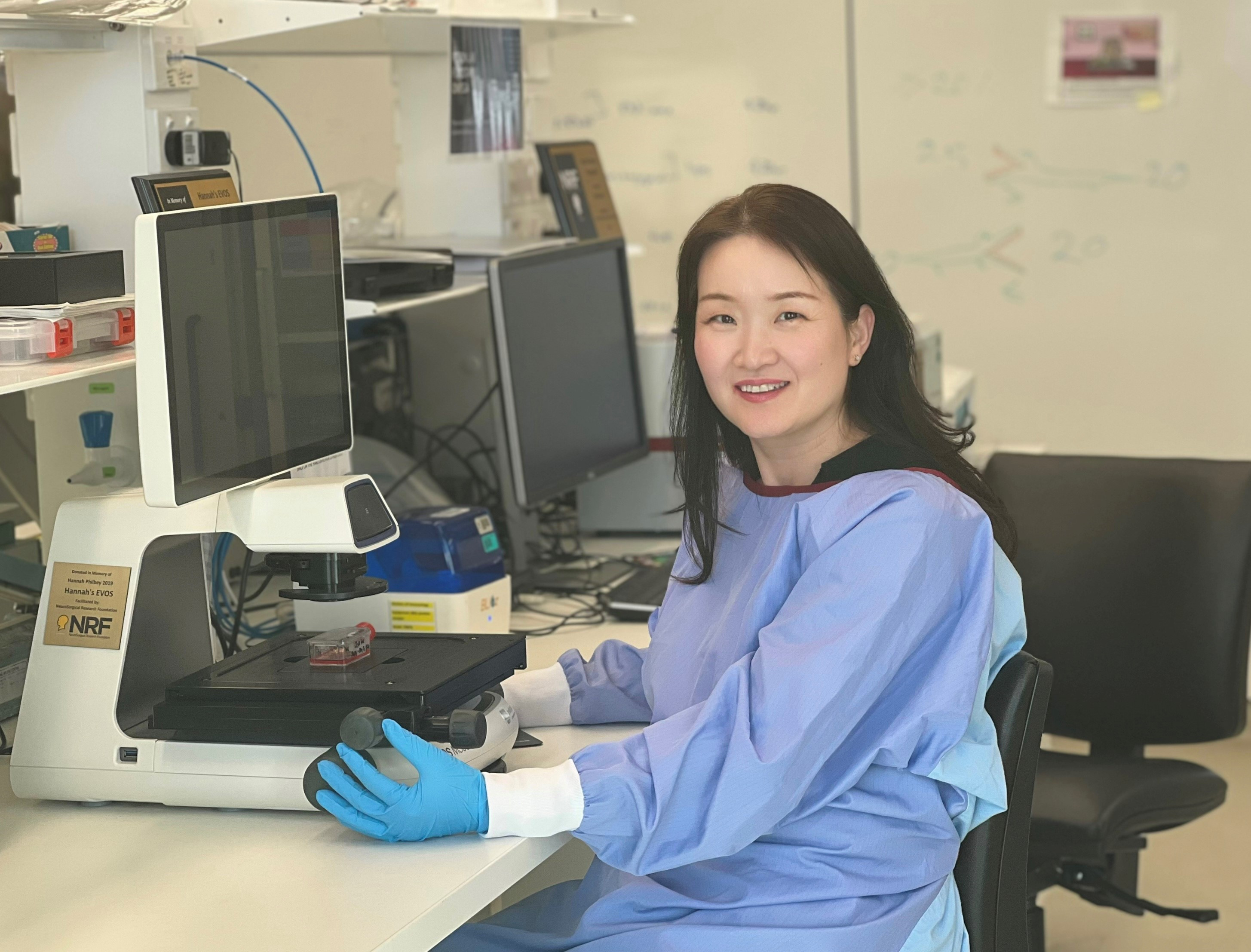
Dr Manjun Li, MD PhD
Centre for Cancer Biology, Uni SA
Funding: $50,000
Human induced pluripotent stem (hiPSC) cells have the capacity to mimic the genetic landscape of the human brain across neurodevelopment. Moreover, hiPSC-derived monolayer cultures have demonstrated that key neurodevelopmental features can be recapitulated in-vitro. This has enabled researchers to evaluate neurological disorders across neurogenesis and recapitulate electrophysiological phenotypes. However, whether such lab-grown brain models recapitulate biophysical properties specific to humans is unknown.
Therefore, our project aims to systematically compare the intrinsic firing features of hiPSC- derived neurons with ex vivo cortical human biopsies. If successful, this project will advance the relevance of preclinical models for neurological disorders and ultimately improve bench-to- clinic translation.
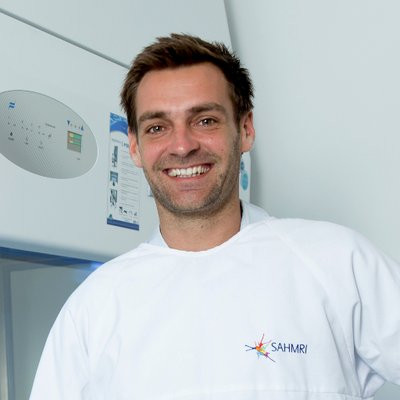
Associate Professor Cedric Bardy PhD Director of The Laboratory for Human Neurophysiology & Genetics
Flinders University - College of Medicine and Public Health
Funding: $50,000
The commonest and most lethal aggressive adult primary brain cancer is glioblastoma multiforme (GBM). Standard treatment using surgery, radiotherapy, and chemotherapy is lengthy and modestly extends survival but breeds treatment-resistant disease that almost always causes death. The infiltrative and invasive nature of GBM defeats conventional treatment attempts because removing all disease destroys too much normal brain. Genetically engineering a patient’s own lymphocytes against GBM to make chimeric antigen receptor (CAR)-T cells is a promising new therapy. However, GBM’s hostile micronvironment limits the effectiveness of CAR-T cells. We have discovered two ways that may overcome this limitation of CAR-T cell therapy.
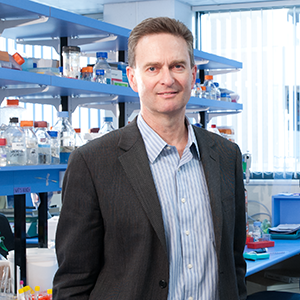
Funding: $11,054 - Brave for Dave

This machine gives us the ability to analyse the immune cells in the blood of mice with brain tumours during our immunotherapy studies. Such information is critical to knowing how to improve immunotherapies. This type of analysis took us 4 hours and requires larger amounts of mouse blood. This machine gives us the same results in less than 5 minutes and from very small amounts of blood.
Dr Briony Gliddon BSc(Hons), PhD Research Fellow
Centre for Cancer Biology, Uni SA
Funding: $50,000
A medical device that performs cllosed system cell selection for cell therapy manufacturing. The system ensures purity of the final cell therapy product so that it can be safely administered to patients and is TGA-compliant.
Dr Tessa Gargett, Research Officer
Centre for Cancer Biology, UniSA
Funding: $50,000
Pete's Army - In Memory of Pete Cutting
Preclinical models that recapitulate key characteristics of glioblastoma, namely invasiveness, heterogeneity, immune microenvironment, and intact blood-brain-barrier are essential for successful clinical translation of research. The immune system is fundamental to how glioblastoma responds to treatments, however, preclinical models that mimic interactions between the immune system and glioblastoma tumour are limited. To overcome this, we propose to develop humanised preclinical model of glioblastoma which will produce human immune cells and which harbor brain tumours derived from patient glioblastoma cells. This will generate superior preclinical models of glioblastoma, leading to improved translation of research and better patient outcomes.

Dr Briony Gliddon BSc(Hons), PhD Research Fellow
University of South Australia Centre for Cancer Biology
Funding: $50,000
Patrick of Coonawarra – In Memory Patrick Tocaciu
Glioblastoma is the deadliest form of brain cancer, yet current treatment options are largely ineffective. In response to this desperate need, we are developing a new treatment for glioblastoma based on a revolutionary type of ‘living drug’ known as CAR-T cells. Here, we aim to maximise the ability of CAR-T cells to enter brain tumours. We will do this by studying blood vessels within brain tumours of glioblastoma patients and preclinical models, to find out what makes them permissive to the entry of CAR-T cells. Then we will engineer our therapy to take full advantage of this gateway, hence enhancing treatment success.

Associate Professor Lisa Ebert B.Sc.(Hons), PhD Senior Research Fellow
Central Adelaide Local Health Network, SA Health -Centre for Cancer Biology
Funding: $46,950
In memory of Rick Schembri
Glioblastoma is the most aggressive form of brain cancer, with a median survival rate of 15 months, which has not changed for decades. Despite surgery, radiotherapy and chemotherapy treatment, tumour recurrence occurs in almost every case of glioblastoma, highlighting a desperate need for new treatment options. Tumour cells have a high demand for energy, often fueled by metabolites supplied by the surrounding healthy brain cells. This project aims to identify new therapeutic targets in aggressive glioblastoma tumours by inhibiting supportive metabolic networks in the microenvironment to improve brain cancer patients’ survival.
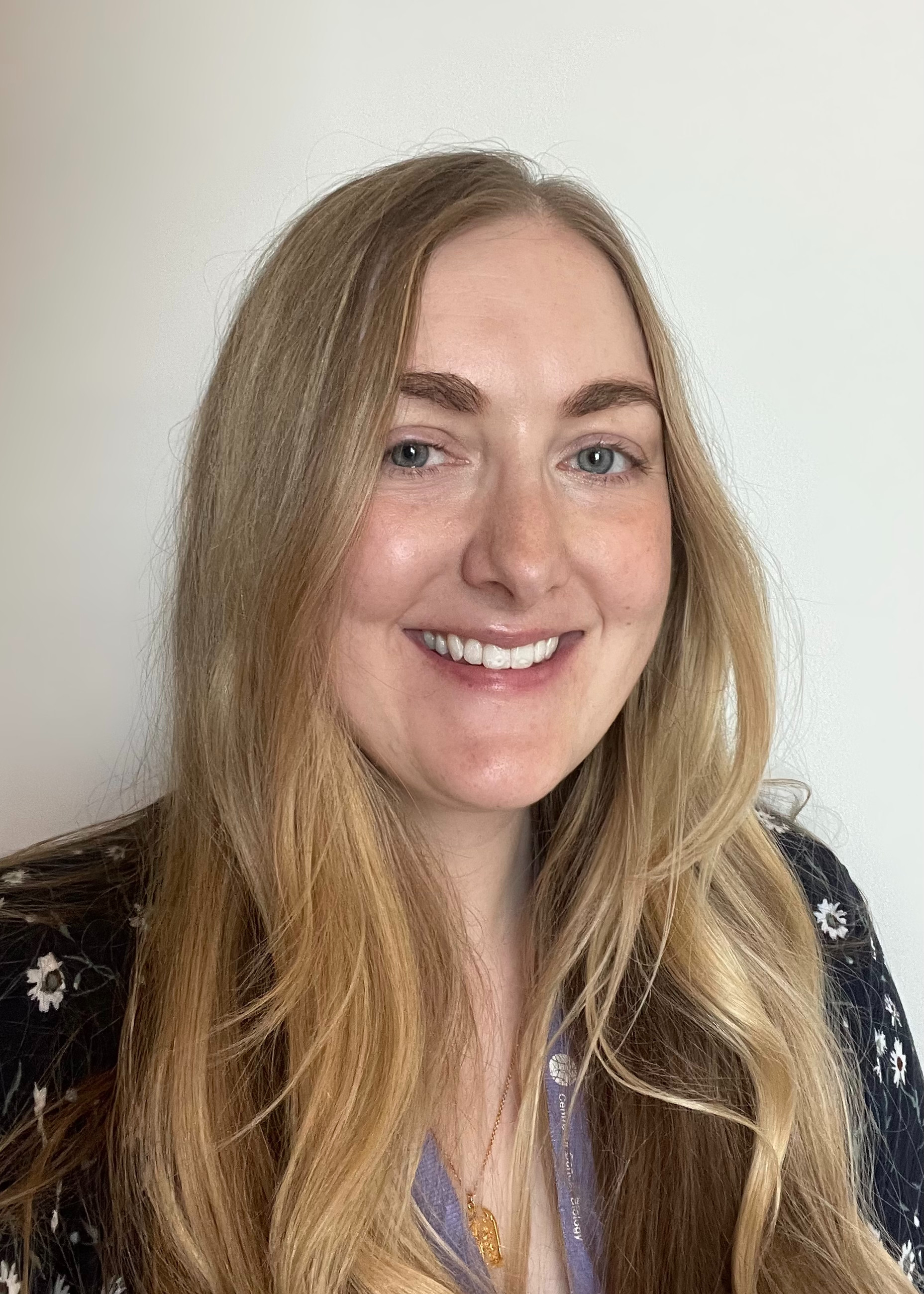
Dr Chloe Shard, PhD Postdoctoral Researcher
University of South Australia Centre for Cancer Biology

2023 Research Funded:
Funding: $50,000
Glioblastoma is the deadliest form of brain cancer, with limited treatment options. We are developing a new treatment for glioblastoma, based on a revolutionary type of ‘living drug’ known as CAR-T cells. In this approach, T cells are isolated from a patient’s blood and genetically engineered to give them cancer-killing activity. These cells are returned to the patient’s bloodstream; they then travel to the tumour to attack it from within. We recently received regulatory approval to test this therapy in brain cancer patients. Here, we seek funding to support the treatment of the first 6 glioblastoma patients in this clinical trial.

Associate Professor Lisa Ebert B.Sc.(Hons), PhD Senior Research Fellow
Central Adelaide Local Health Network, SA Health -Centre for Cancer Biology
Funding: $49,991
More effective therapies are desperately needed for glioblastoma. Accumulating evidence suggests that sphingosine-1-phosphate, a bioactive lipid mediator produced by sphingosine kinases (SphK1 and SphK2), plays a crucial role in the progression of glioblastomas. Whilst both SphK1 and SphK2 have been implicated in glioblastoma, the distinct function of each kinase in both the tumour and tumour microenvironment remains unclear. In this proposal, we will examine brain tumour growth in SphK1 and SphK2 deficient mouse models to investigate the specific roles each of the sphingosine kinases play in glioblastoma pathogenesis. Successful outcomes will provide new therapeutic targets for glioblastoma.

Dr Briony Gliddon BSc(Hons), PhD Research Fellow
University of South Australia Centre for Cancer Biology
Funding: $49,780
Glioblastoma (GBM) is an aggressive type of brain cancer with a very low median survival (11-15 months). GBM cells adapt to grow in a low oxygen (hypoxia) environment and overexpress ‘don’t eat me’ signal CD47 to evade from immune cells. These mechanisms render GBM cells resistant to therapies. Hypoxia perturbs metabolism and protein synthesis which is destructive to normal cells. However, GBM cells overcome metabolic and ER-stress to survive and grow. We hypothesise that the ‘don’t eat me’ signal CD47 helps GBM cells to adapt and regulates cellular mechanisms that help GBMs to proliferate and migrate. Therefore, we propose to understand the CD47 driven mechanisms that facilitate the growth of GBMs and pharmacologically target CD47 as a therapeutic intervention to treat GBM.

Dr Nirmal Robinson M. Pharm, PhD Head, Cellular-Stress and Immune Response Laboratory
University of South Australia - Centre for Cancer Biology
Funding: $31,000
Glioblastoma Multiforme is an aggressive brain cancer with poor prognosis and survival. Tumours recur after treatment as cells develop resistance to chemotherapy, proliferate and aggressively invade resected and healthy brain tissues. Current research focuses on increasing sensitivity to chemotherapeutic drugs but not on limiting invasive capabilities of these cells. No pharmacological agents that target cell motility mechanisms are used currently as tools for limiting GBM invasiveness during eradication treatments. This project focuses on characterizing pharmacological compounds identified from a comprehensive screen of natural compounds sourced from Davis Open Access Compound library that effectively inhibit invasion of glioblastoma cells.
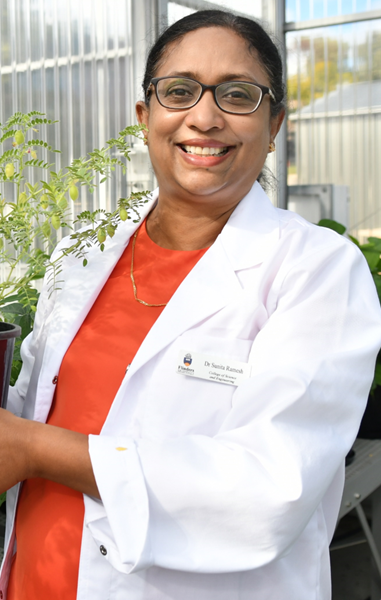
Dr Sunita Ramesh, Biological Sciences, Lecturer
Flinders University
Funding: $49,992
Brain tumours are difficult to treat, have a high fatality rate, and a devastating impact on the quality of life of patients. Thus, new therapies for brain tumours are desperately needed. In the last few years, immunotherapies have offered great hope for brain tumour treatment. Unfortunately, this hope has not yet translated into better outcomes for patients due largely to brain tumour-induced systemic immunosuppression. This proposal aims to overcome this problem in order to improve the potency of brain tumour immunotherapies. Successful outcomes in this work have the potential to dramatically improve the survival outcomes for brain tumour patients

Dr Melinda Tea BLabMed(Hons), PhD Research Fellow
University of South Australia Centre for Cancer Biology
Funding: $50,000
The effectiveness of brain cancer drugs is best assessed by measured cancer cell growth using in vitro colony-forming assays. These are currently quantified manually, which is subjective and time-consuming. The GelCount is an automated counting and analysis platform which would significantly reduce the time required to screen new drugs.
Dr Melinda Tea BLabMed(Hons), PhD Research Fellow
University of South Australia Centre for Cancer Biology

2022 Research Funded:
Funding: $43,000
Project: In the most devastating form of brain cancer – glioblastoma – the same few regions of our DNA are commonly mutated. However, despite the low number of these commonly occurring mutations, we know very little about how this actually causes cancer, or how it can help us treat brain cancer more effectively.
By replicating these common genetic mutations in normal brain cells, we have, for the first time, created unique models of brain cancer that represent each major subtype of known glioblastomas. We will characterise these at the finest possible resolution, down to single cells, to understand how brain cancers arise and how we might better intervene to treat them.

Dr Brett Stringer MBBS PhD Brain Cancer Research Fellow
Flinders University - Flinders Health and Medical Research Institute
Funding: $32,743
Project: The SA Neurological Tumour Bank(SANTB) obtains brain tumour tissue from the Flinders Medical Centre operating theatres and blood samples which are processed prior to freezing or passing on to research groups.
The SANTB laboratory currently lacks two important pieces of equipment required for processing specimens and relies on using shared and aging equipment in other laboratories. Potentially infectious, these specimens pose a risk to the laboratory staff required to process them and minimising processing time is critical to preserve the integrity of the tissue. Access to this equipment within our laboratory will remove the need to transport potentially infectious specimens between laboratories and streamline our workflow facilitating the rapid and sterile processing of specimens.
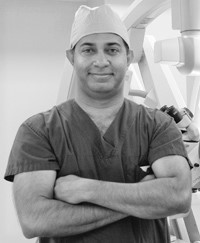
Dr Santosh Poonnoose
FRACS Director of South Australian Neurological Tumour Bank
Flinders University - Department of Neurosurgery
Funding: $42,248
Project: Cancer survival rates are the highest they have ever been (69% of all cancers), reflecting advances in early diagnoses and effective treatments (AIHW 2020). While this is a terrific achievement, a new challenge has emerged.
One in three cancer survivors describes long-term side effects undermining their overall quality of life (Macmillan Cancer Support 2013). A significant debilitating side-effect reported is chemotherapy-induced cognitive impairment. Patients often experience diminished capacity in memory, processing speeds, attention, executive function, and reduced mental health (Boscher et al. 2020).
Therefore, our project aims to investigate the underlying neurotoxic side-effects of chemotherapies pre-clinically with innovative human brain tissue models.

Associate Professor Cedric Bardy PhD Director of The Laboratory for Human Neurophysiology & Genetics
Flinders University - College of Medicine and Public Health
Funding: $42,809
Project: Glioblastoma (GBM) is an aggressive type of brain cancer with a very low median survival (11-15 months). GBM cells adapt to grow in a low oxygen (hypoxia) environment and overexpress ‘don’t eat me’ signals to evade from immune cells.
These mechanisms render GBM cells resistant to therapies. Hypoxia perturbs protein synthesis and damages Endoplasmic Reticulum (ER-stress) which is destructive to cells. GBM cells overcome ER-stress by degrading damaged ER through a process termed as ER-phagy. We propose that inhibiting ER-phagy not only kills GBM cells, it also reduces the expression of ‘don’t eat me’ signals which further promotes GBM clearance.

Dr Nirmal Robinson M. Pharm, PhD Head, Cellular-Stress and Immune Response Laboratory
University of South Australia - Centre for Cancer Biology
Funding: $43,000
Project: Glioblastomas are aggressive brain tumours with extremely poor patient outcomes. Currently treatment consists of surgical removal, and post-operative radio/chemotherapy. Despite aggressive therapy, the disease invariably progresses or recurs as resistance to chemotherapy drugs develops. Thus, more effective therapies for this cancer are desperately needed.
Immunotherapy, using the patient’s own white blood cells engineered to kill cancer has shown striking outcomes in a number of cancers, but continues to be challenging for glioblastoma therapy. In this project we aim to better engineer these white blood cells so that they can traffic more effectively to the brain where they can kill glioblastoma.

Dr Briony Gliddon BSc(Hons), PhD Research Fellow
University of South Australia Centre for Cancer Biology
Funding: $38,500
Project: This project will explore the diagnostic utility of a novel magnetic resonance imaging technique known as magnetic resonance fingerprinting.
The project will develop methods such as graphical analysis and visualization tools, as well as artificial intelligence (AI) technology for analysing brain imaging performed in patients with brain cancers undergoing neurosurgery.
The methods will be developed to assist with certain diagnostic dilemmas often encountered by radiologists and neurosurgeons. By resolving these dilemmas pre-operatively, neurosurgeons will be able to better select patients for surgery and improve surgical planning, thereby reducing the risks and promoting the overall safety of neurosurgery.
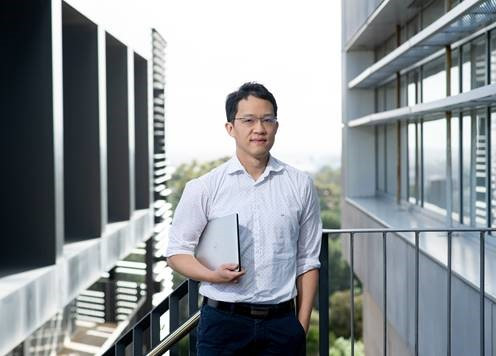
Dr Minh-Son To BPharm (Hons), BMath&CompSci (Hons), MBiostat, MD, PhD Casual Professional Research
Flinders University - College of Medicine and Public Health
Funding: $43,000
Project: Glioblastoma is the deadliest form of brain cancer, with no effective treatments. We are developing a new treatment for glioblastoma, based on a revolutionary type of ‘living drug’ known as CAR-T cells. In this approach, T cells are isolated from a patient’s blood and genetically engineered to give them cancer-killing activity.
These cells are returned to the patient’s bloodstream; they then travel to the tumour to attack it from within. This project will analyse patient tumours to discover molecular pathways that control T cell entry from the bloodstream. This information can then be used to optimise our CAR-T cell therapy.

Dr Lisa Ebert B.Sc.(Hons), PhD Senior Research Fellow
Central Adelaide Local Health Network, SA Health -Centre for Cancer Biology
Funding: $43,000
Project: Glioblastoma is a heartbreaking diagnosis and most of glioblastoma patients are uncertain of the potential benefit they could receive from different available treatment options.
In this project, we will measure, for the first time and patient-by-patient, the survival benefit in glioblastoma patients of different treatment options, including also those currently in clinical trials.
This result would have profound implications in the clinical management of glioblastoma by an enhanced capacity to:
This will constitute a significant advance to improve survival and quality of life for glioblastoma patients.

Dr Guillermo A. Gomez PhD, Senior Research Fellow, Laboratory Head
University of South Australia - Centre for Cancer Biology
Funding: $37,270
Project: The South Australian Neurological Tumour Bank (SANTB) currently collects and banks brain and spinal cord tumour tissue samples and clinical information from consenting patients undergoing neurosurgery. These specimens are available to researchers in SA and interstate to facilitate research projects into neurological cancer.
The aim of this project is to greatly expand the existing capabilities of the SANTB by developing the capacity to collect each participant’s imaging data (MRI, CT scans etc) and incorporate the SANTB into PHenotyping Outcomes for clinical Care, Quality, and Service (PHOCQUS), a comprehensive clinical data linkage initiative led by Flinders University.
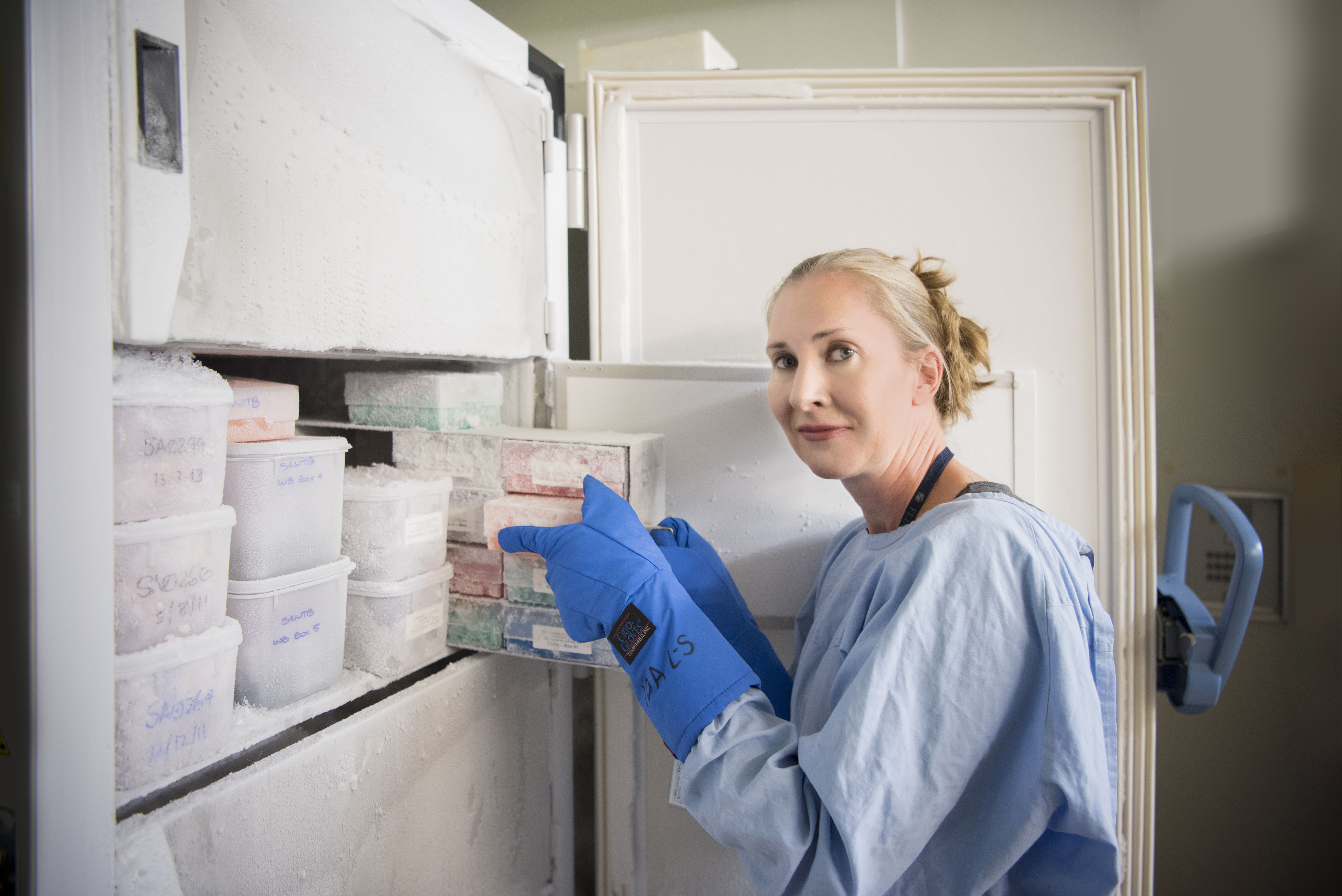
Dr Rebecca Ormsby BSc (Hons), PhD Coordinator, SA Neurological Tumour Bank, Research Associate
Flinders University - College of Medicine & Public Health
Value: $25,000
Brain tumours kill more people under 40 than any other cancer. The survival rate for glioblastoma, the most common malignant primary brain tumour in adults, has barely improved due to limited treatment options. Over time, the disease returns and patients quickly succumb.
Current preclinical models of glioblastoma are mostly limited to studies of the original tumour. These models fail to take into account the tumours that recur following short-term success of initial treatment with surgical resection followed by chemoradiotherapy.
We aim to develop advanced preclinical models of recurrent glioblastoma which in future can be used to assess new therapeutic options.

Dr Melinda Tea BLabMed(Hons), PhD Research Fellow
University of South Australia Centre for Cancer Biology
Funding: $25,000
Project: There is a critical need for better imaging of high grade glioma towards enabling the delivery of more accurately targeted treatment including radiation therapy, a key requirement to prolonging survival without impacting on patients quality of life.
Our research team is developing a magnetic resonance imaging agent that specifically targets cells of the tumour microenvironments, with the aim of providing improved delineation of brain tumours on MRI. This approach has the potential to enable mapping the most aggressive tumor areas which could then receive “boost” radiation doses, including with cutting edge proton therapy and MRI-Linac technologies.
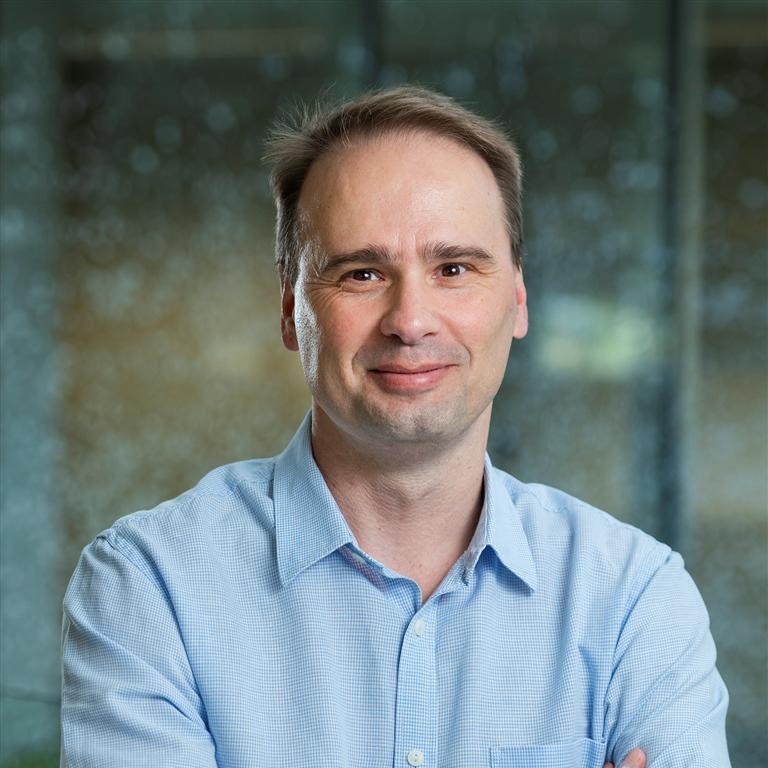
Prof Benjamin Thierry Bio-eng, PhD Research Professor, Bioengineering UniSA
Click here to donate to Brain Tumour Research.